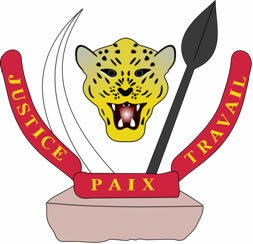The Democratic Republic of Congo (formerly Zaire), also called Congo Kinshasa to differentiate it from neighboring Congo (or Congo-Brazzavile), is the third largest country in territorial extension of the African continent, limited to Sudan (to the northeast), Central African Republic (to the north), Congo (to the northwest and west), with the enclave Angola from Cabinda (to the west), Angola (to the southwest), Zambia (to the south), Tanzania (to the southeast), Burundi, Rwanda and Uganda (to the east), besides being bathed by the Atlantic Ocean. (to the west).
The population of the Democratic Republic of Congo has great ethnic diversity: more than 200 different ethnicities.
National independence was obtained, through Belgium, on June 30, 1960, adopting the name of Republic of Congo and, in 1964, the country was renamed Democratic Republic of Congo (DRC).
After the independence process, the Democratic Republic of Congo went through a series of political and civil conflicts, promoted by the dispute for power. Only in 1967, with the election of Joseph-Desiré Mobuto, did the country achieve brief political stability. Mobuto substituted the country name for Zaire. With his death in 1997, the new government renamed the country the Democratic Republic of Congo.
The national economy suffers the consequences of armed conflicts in the country: reduction of foreign investments, destruction of infrastructure, inflation, among other aspects. The main national wealth is the mineral reserves – diamonds, gold, iron and uranium.
This country has become, in recent years, the focus of conflicts in the African Great Lakes region, which were aggravated by the military involvement of neighboring countries. About 4 million people died as a result of these conflicts.
The country's inhabitants suffer from various socioeconomic problems: the infant mortality rate is one of the highest on the planet: 115 deaths for every thousand live births; the Human Development Index (HDI) is only 0.239, being the second worst average in the world; illiteracy affects more than 32% of the inhabitants; about 76% of the population is undernourished; most inhabitants live on less than $1 a day, that is, below the poverty line.

Coat of Arms of the Democratic Republic of Congo
Data from the Democratic Republic of Congo:
Territorial extension: 2,344,858 km².
Location: Africa.
Capital: Kinshasa.
Climate: Equatorial rainy.
Government: Presidential Republic.
Administrative division: 26 provinces.
Language: French (official), Bantu dialects.
Religion: Christianity 95.2% (Catholics 49.7%, Independent 20.8%, Protestants 19%, others 5.7%), others 4.3%, no religion 0.5%.
Population: 66,020,365 inhabitants. (Men: 32,717,617; Women: 33,302,748).
Ethnic Composition: Lubas 18%, Congos 16.1%, Mongos 13.5%, Rwanda 10.3%, Zandi 6.1%, Bangis and Nanges 5.8%, Teques 2.7%, Boas 2.3%, shocks 1.8%, other 23.4%.
Demographic density: 28 inhab/km².
Average annual population growth rate: 2.7%.
Population residing in urban areas: 34.56%.
Population residing in rural areas: 65.44%.
Illiteracy: 32.8%.
Undernourished population: 76%.
Life expectancy at birth: 46.1 years.
Households with access to clean water: 46%.
Households with access to a health network: 31%.
Human Development Index (HDI): 0.239 (low).
Currency: Congolese Franc.
Gross Domestic Product (GDP): 11.6 billion dollars.
GDP per capita: $151.
External relations: World Bank, IMF, WTO, UN, SADC, AU.
By Wagner de Cerqueira and Francisco
Graduated in Geography
Brazil School Team
Countries of the world - geography - Brazil School
Source: Brazil School - https://brasilescola.uol.com.br/geografia/republica-congo.htm

